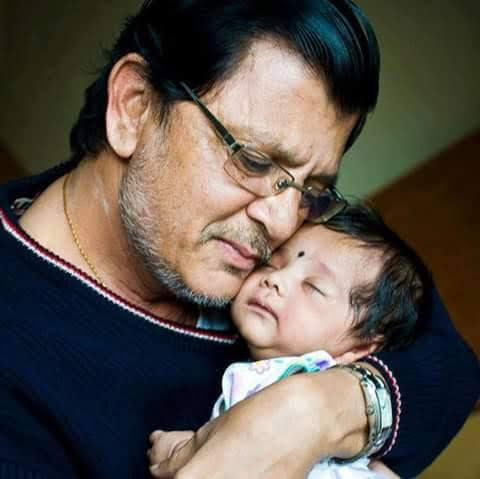The Panchabhutha Sthala Kanchipuram has Ekambareswarar Temple
This Temple represents Prithvi ,The Earth Element of Nature.

This town Kanchipuram,housing Kanchi Kamakshi Amman Temple, is in a straight line with Chdiambaram ,Aakasa Sthala (Ether) and Sri Kala Hasti,Vayu Sthala, Air Element.

(I am providing the Legend of the temple in this post)
In addition to being geographically linked to two Shiva Kshetras of Elements, it is curious to find that there is a Mango Tree, where Lord Shiva and Parvathi got married.
And this Tree is about 3500 years old.
Sage Agastya shows he way to date this tree
The marriage of Shiva and Parvathi, to my knowledge, happened once in Himalayas and the same event was witnessed by Sage Agastya, who could not attend the marriage because Lord Shiva ordered him to proceed to South to counter balance the earth.
This has happened about 40 million years ago, based on earths’ plate movement.
‘
‘Life in the universe is created and destroyed once every 4.1 to 8.2 billion years, which is one full day (day and night) for Brahma. The lifetime of a Brahma is believed to be 311 trillion and 40 billion years-Hindu Cosmology.
‘Eighty million years ago, India was approximately 6400 km (3968 miles) south of the Eurasian plate. Separating the two was the Tethys Sea. The Indo-Australian tectonic plate – containing the continent of Australia, the Indian subcontinent, and surrounding ocean – was pushed northward by the convection currents generated in the inner mantle. For millions of years, India made its way across the sea toward the Eurasian plate. As India approached Asia, around 40 million years ago, the Tethys Sea began to shrink and its seabed slowly pushed upwards.’
This is what Agastya had seen, if he had seen it immediately after the marriage when he crossed over the Vindhyas
Another theory is that Agastya came to South around 5000 years ago .
This is based on the Agastya Star Canopus presence when Agastya moved to South.
‘
As Time is Cyclic in Hinduism, these events keep on occurring in every Yuga.
The Kali Yuga is about 5000 years old.
The marriage of Shiva and Parvathi coud have played out again towards the end of Dwapara Yuga as well around 5000 years ago!
Now to the Mango Tree at Ekambareswarar temple being 3500 years may be validated by this calculation.
The unique features of Ekambareswarar temple:
- The image of Lord Ekambaranathar is believed to have been created by the deity Parvathi devi herself, who is said to have performed a penance to attain him.
- The processional image of Ambal Parvathi is Elavar Kuzali Amman.
- A mango tree, the Sthala Virusham is at the back of the Sanctum of the inner precincts of the temple, which is over 3500 years old. It is the belief of the religious people that the Devi Parvathi had worshipped Lord Siva under this tree.
- The branches of this Mango tree is said to bear four different types of mangoes, representing the four Vedas in Hinduism.
- The main temple tower is 192 feet and is the 5th tallest tower in Tamil Nadu, visible even from a distance and was built by the famous Vijanagaram King, Krishnadeva Royar in the year 1509.
- There is another smaller tower inside the temple which is called as the Pallava Tower.
- There is a Sahasra Lingam with one thousand small lingams etched on the body of a big Lingam icon in the praharam.
- One hundred and eight Lingam icons are installed in the first corridor platform of the temple (Praharam)
- The images of Navagrahas are seen with their mounts or vahanas, a posture so rare to see in other temples.
- On the day of the Ratha Sabthami, the rays of Sun fall directly on Lord Siva in Sanctum Sanctorum, which is a marvel in the architecture and speaks loudly on the knowledge of astronomy of the artisans who had constructed this temple.
- All the three Carnatic Music Maestros, Thyagaraja, Shyama Sastri, and Muthuswami Dikshadar had visited this temple and sangkirthanas here.
- The temple has five corridors (praharams) including the outer surrounding streets of the temple.
- The Tirtham of this temple is named, Sivaganga Tirtham
- There is a famous Vaishnavite temple, Tiru nila thingal Thundam, the 49th Divadesam, consecrated by Saint-poet,Tirumangai Alwar situated in the inner precincts of this temple. The arulmigu Perumal’s name is Nila Thingal Thundaththan and that of Thayrar, Ner oruvarilla Valli. This is the most important aspect of this temple and one of the two such Vishnu temples in the same precincts of the Siva’s temple in South India. The other being that of Govindaraja Perumal at Chidambaram. (There is another Divya desam the 54th one, consecrated by the saint poetTirumangai Alwar, called Tiruk kalva nur within Kamatchi Ammantemple in Kanchipuram itself but, this is in Ambal’s temple and not in Siva’s. The presiding deities here are Adivaraha Perumal and Thayar Anjeelai Valli Nachiyar)
Legend.
Citation.
https://csgraju.wordpress.com/2010/02/24/splendors-of-indian-temples-19/









Leave a comment